After contributing to the visual spectacle of Guardians of the Galaxy Vol 3, Dan Macarin steps into the world of Alien: Romulus, the next thrilling chapter in the iconic saga.
Earlier this year, Ludovic Chailloleau walked us through the animation work Weta FX accomplished for Godzilla x Kong: The New Empire. Now, he opens up about the challenges faced on the new Alien movie.
How did you and Weta FX get involved on this show?
Daniel Macarin (DM): Fede Álvarez and the onset team were working through the third act of the movie and really wanted a creative partner that could help develop the ending. Weta FX has done some of the largest third acts in movie history and we were delighted to tackle the task. I had just come off doing the third act in Guardians of the Galaxy, Vol. 3, which also included doing a very difficult oner sequence and a lot of work in space. Ludo and our producer Kevin Sherwood had just come off Godzilla x Kong: The New Empire, which involved an enormous amount of character work and destruction, making the three of us the perfect team for Alien: Romulus.
What was your feeling to enter this iconic universe?
DM: Extremely excited. I have so much Aliens merch around my office and I’m a huge fan of the series that it made it difficult to contain my excitement when working on the film.
Ludovic Chailloleau (LC): Growing up with 80’s franchises is mostly the reason why I wanted to work in VFX today. Alien is a pillar of that universe; I was really excited to work on this film.
How was the collaboration with Director Fede Álvarez and VFX Supervisor Eric Barba?
DM: From very early on in the project, the notes and creative direction Eric shared were making shots continually better, not just different. It made working with him really fantastic because we knew whatever he was going to ask us to do was going to make the story better and the shot more visually appealing. Fede joined our calls almost daily and was very involved with our work. He let us explore a lot of options and styles until we all were happy with how the feel of the story was moving. Fede was very specific in the type of movement and performance he wanted for both the Offspring and the Xenomorphs. It’s always really great when you get to have such a collaborative relationship with the director and put everything you can into making the film great.
LC: Working with Fede and Eric was a great art chemistry. Proposing ideas, bouncing different inspirations off each other. We were able to really explore all the work to pitch and pick the best ideas for the movie. I would say that we did really act as creative partners, working together to give it our best and figure out the third act.
How did you organize the work with your VFX Producer?
DM: Kevin and I pushed a lot of the larger destruction shots, like the Romulus station hitting the rings, up to the front of the schedule. We wanted to make sure that those really big shots had the time they needed to look as good as they do. It puts a lot of pressure on the Models and FX departments, but once we had hit the look we were after, the rest of the shots fell into place more quickly. The creature work on the Offspring and Xenomorphs was more difficult to organize. There was a lot of creative work and ideas that we were constantly adjusting to hit the right look and feel so we had to adapt to a more fluid schedule.
LC: As Dan says, we started with all space shots first and the Offspring’s augmentation work to kind of encapsule the language of both camera and Rob Bobroczkyi’s acting. Once we were more confident with it, we fleshed out the whole last part of the third act together, where all the destruction happens in the vacuum and the characters are hanging in space. This required some prep to really bring the realism into the animation so that it felt really connected with the rest of the sequence.
What are the sequences made by Weta FX?
DM: Weta FX worked on shots throughout the film, but the concentration of our work was the third act. This included Rain fighting the Xenomorphs in zero G, the destruction of the Romulus station; the space environment of the planet and rings, as well as the Offspring’s evolution from birth to maturity and its attack on Rain. From inside the ship and out into space, the Offspring and the final oner as Rain makes her way back to her ship were entirely created by Weta FX.
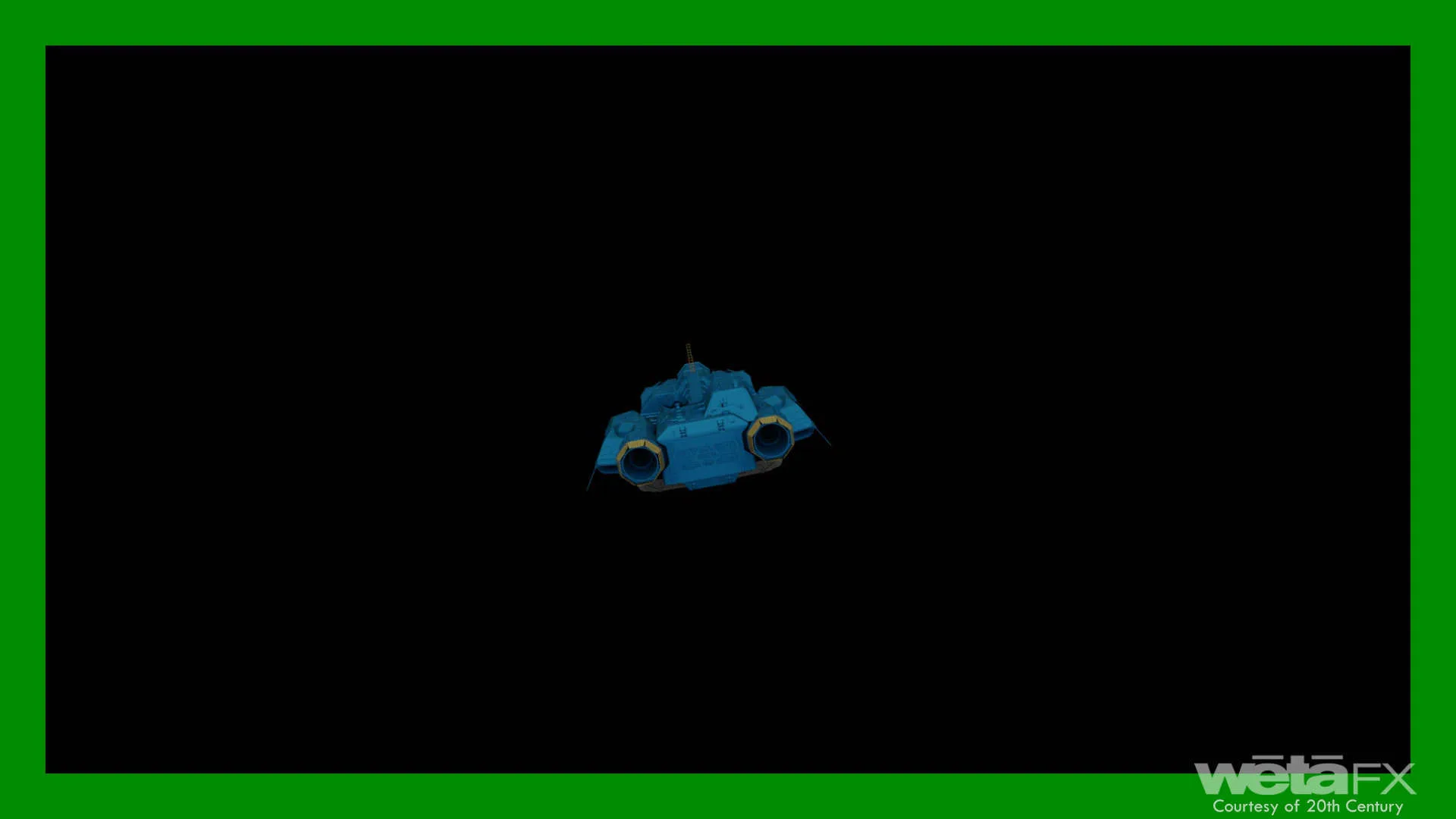
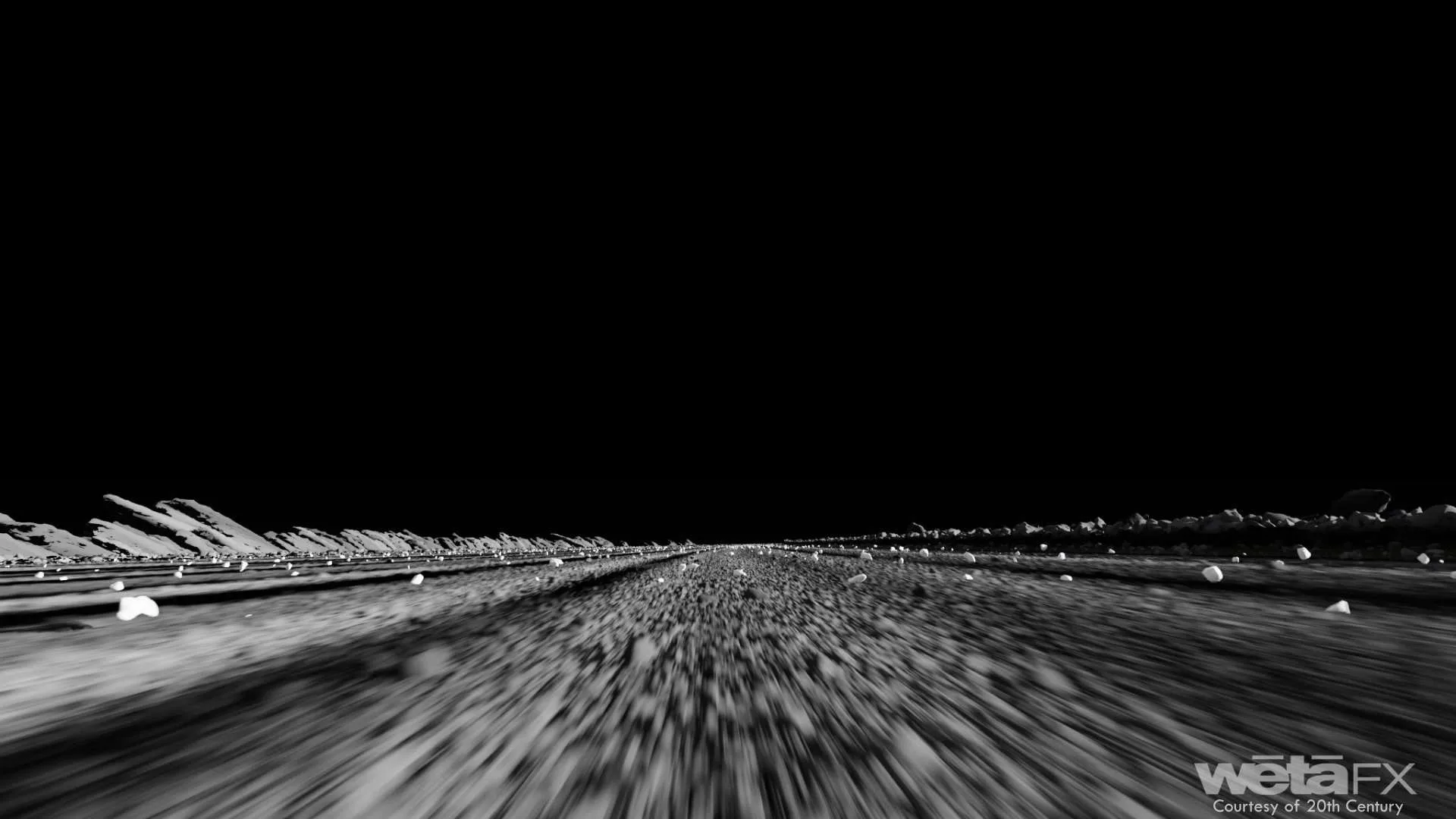
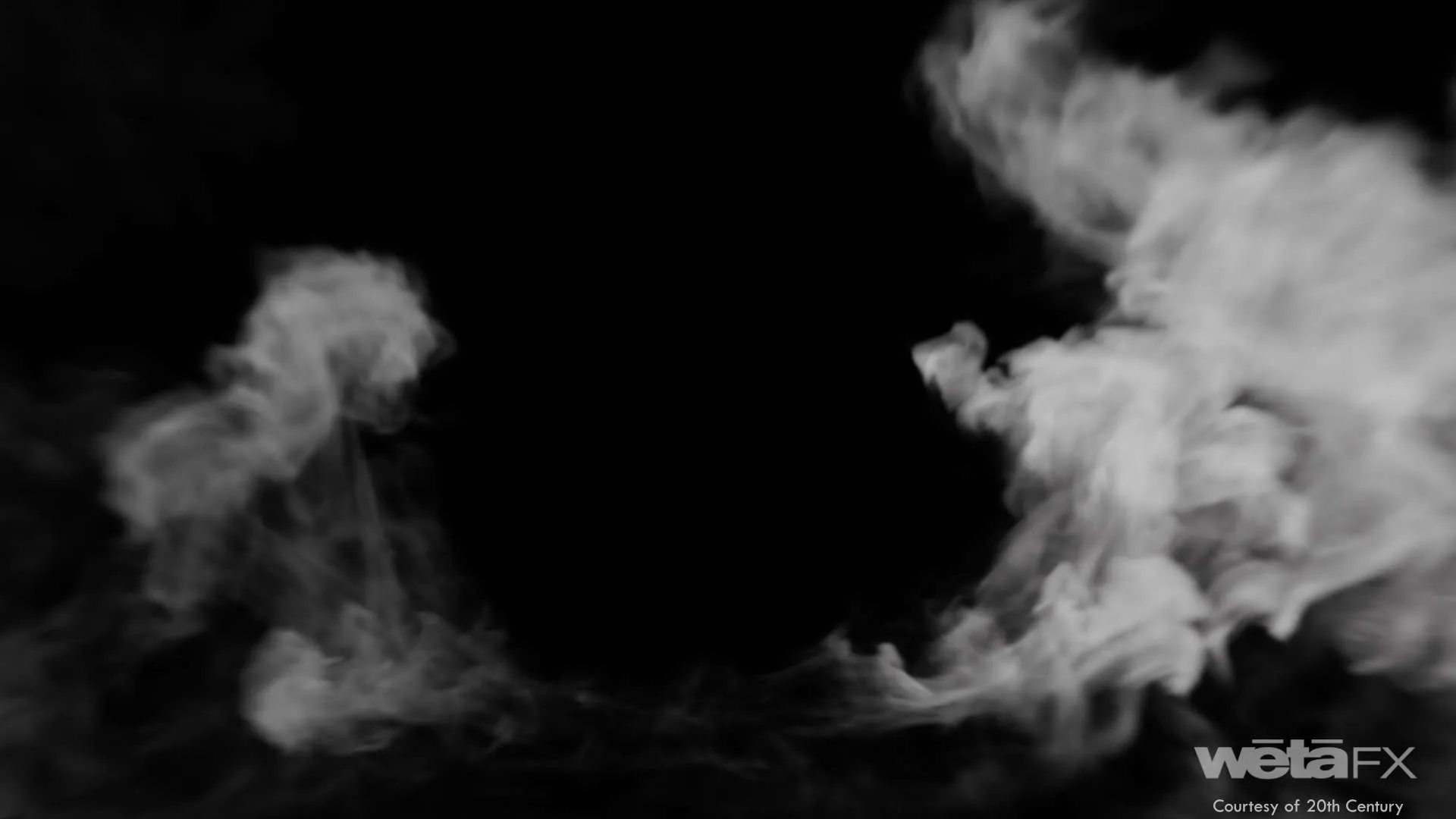
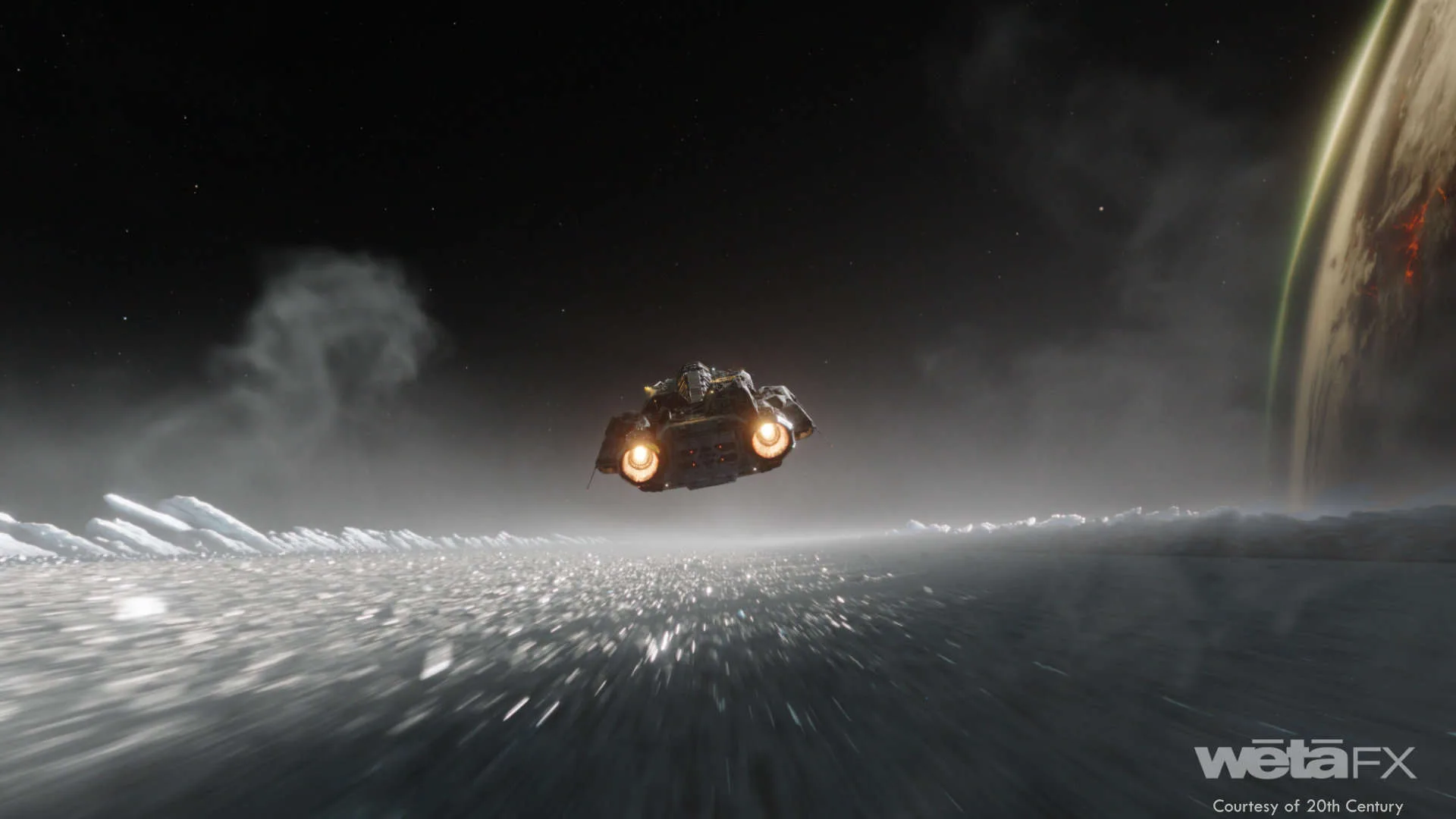
What challenges did you encounter in creating realistic planetary rings, and how did you achieve the desired visual effect?
DM: We always start with reference. We looked at every documentary on Saturn’s rings and every bit of info we could from the files NASA puts online. You get into a lot of scientific discussions that most artists start to doze off. The hard part for the rings was finding a balance of beauty, realistic movement, and danger. If you make the rocks too small, the rings become too flat and you can’t feel the speed and the movement, if you make them too big, the station starts to feel small and the audience loses the perception of its immense size. Fede wanted the rings to feel like a “carpet of death” and for us to incorporate the icy mountains that build up towards the outer edges of Saturn’s rings.
LC: Pretty quickly, we realised that the feeling of scale and speed was more important than the physics behind the actual rings. It had to feel dangerous, slow from far away but deadly fast from close up. At some point, we started treating the rings as a third protagonist. The mantra was to keep it visually interesting, so we added more volume and speed variation to help the cinematography. Then for wider shots we have had to specifically design the ring shape around the planet itself to make it look giant and give a sense of “infinite perspective” in frame.
Could you walk us through the process of designing the spaceship and the space station?
DM: The ship and the station were both designed as miniatures on set. We had a large amount of reference to match. We added small details that were required for the story, like elevator shafts, extra labs and antennae. Our main work was making the assets destruction-ready and building walls, interiors, panels, pipes, and everything contained in the labs for when we ripped apart the station.
How did you ensure that the scale of the planetary rings and the spaceship felt accurate and immersive to the audience?
DM: One of our comp leads, Matt Holland, spent a lot of time finding a way to incorporate the planet’s shadow into the story so we could use it to help the audience understand where the ship and station were at any given time. Our animation team had to work through the best lenses to use for each shot to keep a look that aligns with the way you’d shoot practical miniatures on set. They had to focus on the height from the rings and the speed of the planetary rotation so that the story points could always be easily identifiable to the audience.
LC: When we first compiled our ship and planet assets in the same scene, at the correct scale, it was really impressive to see how different a human camera would have to move in space in order to frame what we wanted. Space and rings are huge, speeds are constants, and operating a camera in these conditions is really different than doing it on “smaller scale” with something in foreground to help figure out camera movements. It took a few iterations for the team to be able to operate these assets in that huge environment and achieve the right feeling. Trying to frame the Corbelan flying at 20.000k/h in front of smaller rocks flying even faster to give a sense of danger and keep it visually clear was exciting. The same for the shot of the Station crashing through the rings, we went through a few staging variations to fine tune the feeling of speed, and huge size.
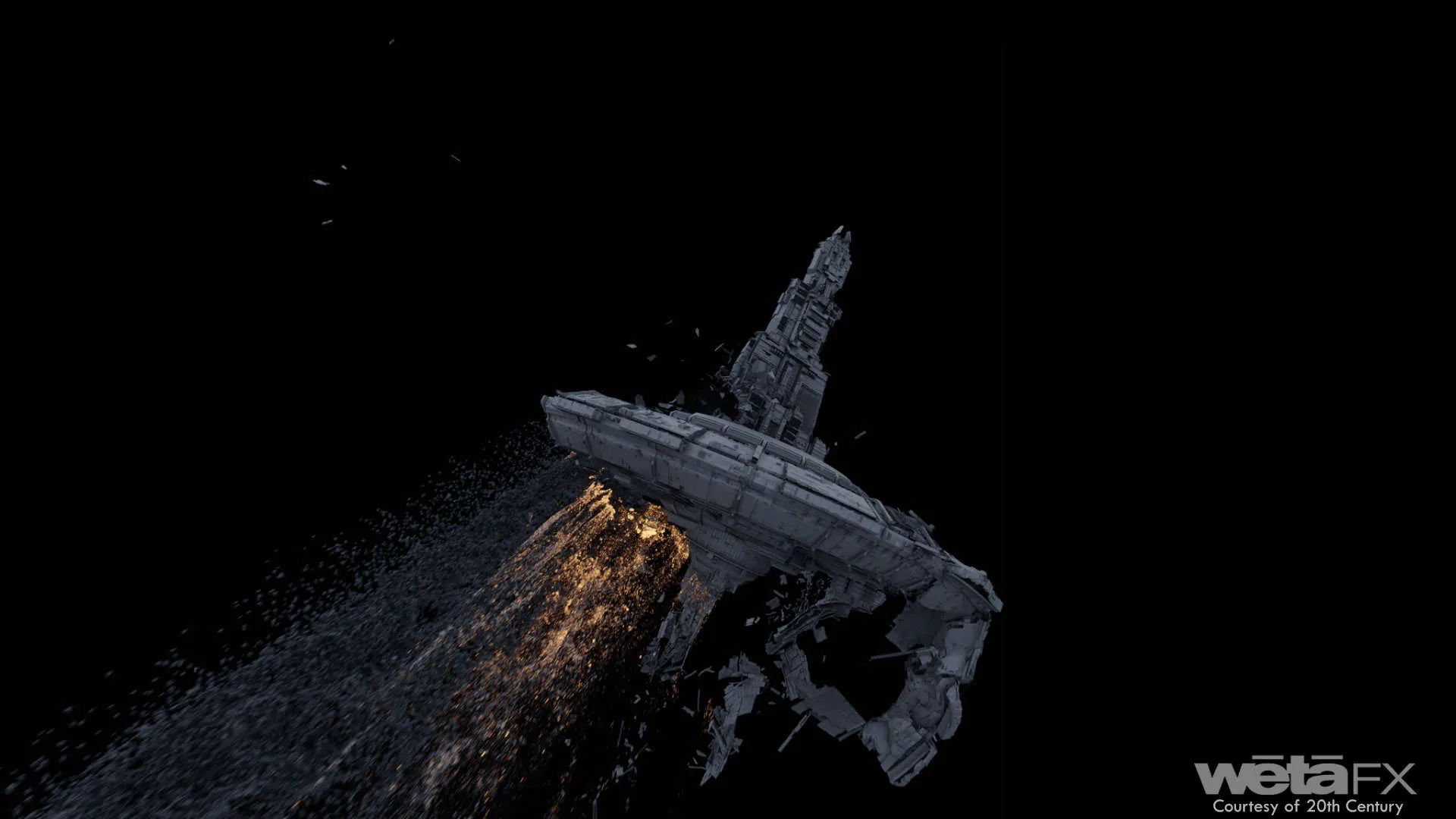
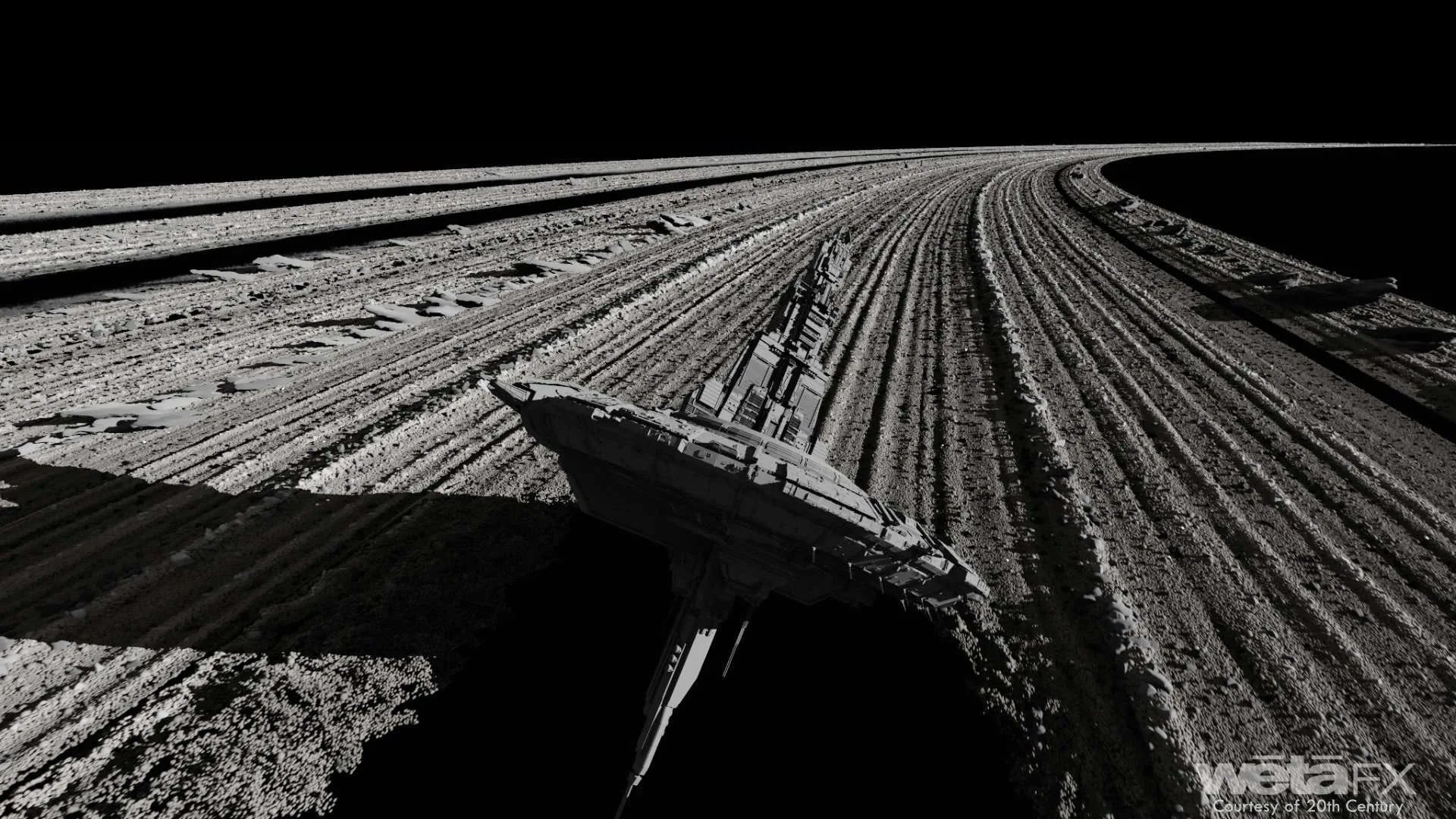
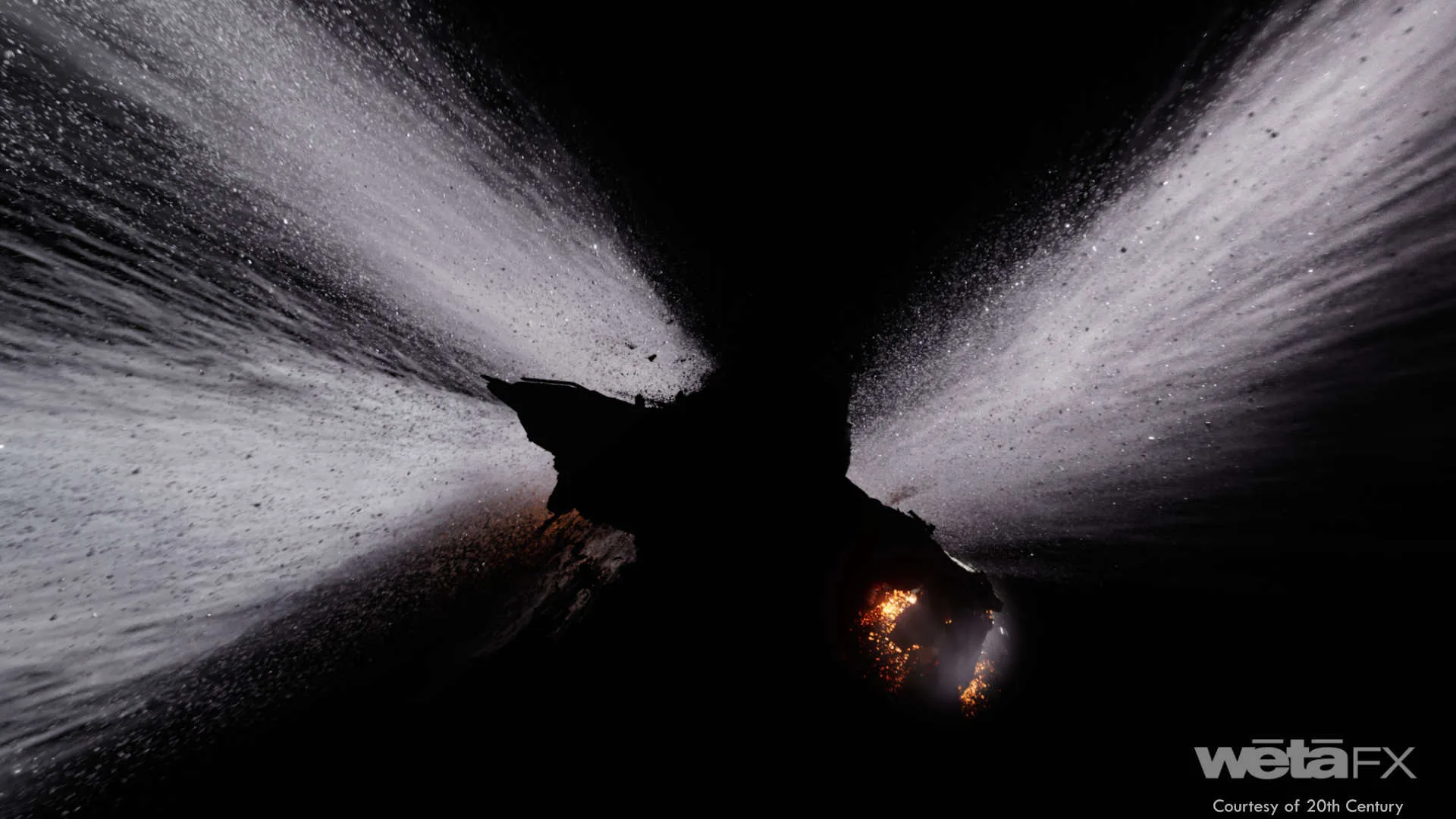
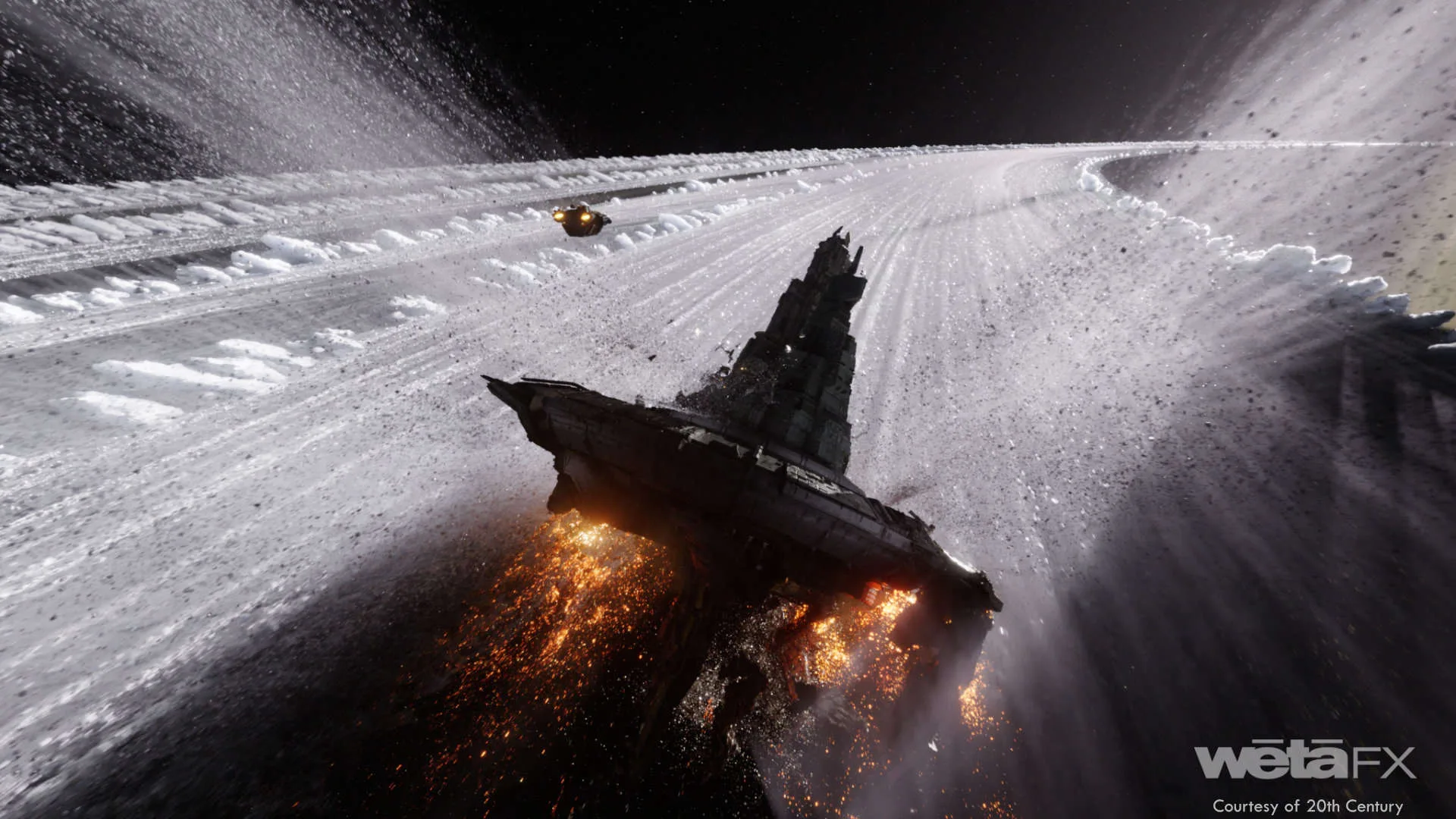
What role did lighting and color play in enhancing the visual impact of the space scenes, particularly around the rings and the station?
DM: For the lighting we relied heavily on what the DP Galo Olivares had shot on set. We tried to keep lighting color and contrast to have a similar feeling to shots throughout the film so that the movie always had a consistent style and visual look. The ring color had to stay more of a neutral icy feel so it didn’t overly contrast with the warmer planet.
Can you share any behind-the-scenes insights into how the visual effects team collaborated to seamlessly integrate the spaceship and space station into the larger cosmic environment?
DM: At the start of the show we asked for the list of camera lenses that the cinematographer uses on set. We got all the data on the lights that are being used. Temperature, gels, size, distance from subject, everything we can get our hands on. The closer we can get our base to what was used on set, the better the integration will be with any practical element we add. Most of the work in space was entirely digital, but its base was still aligned to what you’d see if you were to shoot it as a miniature.
What were the biggest challenges in bringing the Xenomorph to life on screen, especially in terms of movement and interaction with the environment?
DM: Performance. The physiology of the Xenomorph allows it to move in a large variety of ways. You can play them like an actor in a suit or on all fours like a cat. How do the Xeno’s work with each other As a swarm or more individual. You could have them use more of their tails like a scorpion if you wanted. The challenge was to find the best performance based on Fede’s direction and the story we were trying to tell.
LC: The first Alien film features a Xenomorph on two legs, sort of bipedal, then on Aliens, we saw them moving on four legs, on the walls. We went through a few different inspirations to figure out the best feeling for it according to its design constraints. How fast they move, how do they interact with each other. Our main Xeno performance takes place in a zero-gravity environment. To do it we had to build few systems to really kill the incidence of the hips and emphasise the grip on the walls instead. A lot of details were figured out on the fly, like how to animate the tail, how to show that they are moving forward with the heads always leading like a predator on a curve but not too smooth. They had to feel creepy like cockroaches but not too much. Their big four “back-pipes” are sometimes in the way of its limbs, head and tail, but in the meantime, they give it so much of its identity. This creature design is fantastic, it allows so much attitude with minimal input.
Could you elaborate on the techniques used to create the intense zero-gravity battle scene? How did you ensure the physics felt realistic?
DM: We had actors on our mocap stage perform many of the movements. These motions were very carefully adjusted by our animation team, slowing down sections while keeping the overall movement based on real physical performances.
LC: Working on Kong x Godzilla before helped to figure out a better and faster way to capture interesting zero gravity movements. After few discussions with our amazing stage team, we came up with great systems to help give the actors easy flow and allow them to focus on the story of each shot. I think we ended up with something quite interesting. At some points we even had to tone down the floating feeling because we were starting to lose their tension and the dangerousness of the character.
What role did practical effects and CGI play in the creation of the Xenomorph, and how did you strike a balance between the two?
DM: Fede had shot a lot of the in between shots using practical Xenomorphs. This gave us anchor points for the sequence. We knew when and where the Xenos had to be between shots. We knew our look had to match identically to the practical. It was less of a balance and more of a goal. If they could have shot them all practically, they would have, so we needed to make it feel like they did.
How did you choreograph the zero-gravity battle to maintain tension and excitement while also dealing with the complexities of weightlessness?
LC: We carefully broke down each shot of the sequence to really establish the flow and the needs of each performance as a whole. Then we did more breakdowns to allow a few hero Xeno creatures a mini story across all shots in continuity. The rig we built on stage was really helpful and allowed us to fine-tune details. We then composed the shot to give it the right feeling in terms of number and momentum. We had versions with a big horde of Xenomorphs rushing forward, but once in the dark lighting we realised that the feeling was not quite there, so we reorganised their numbers to make it clearer.
What were some of the unique challenges in blending the Xenomorph’s presence with the zero-gravity environment during the battle scene, and how did you overcome them?
DM: Fede had a very specific idea in mind with the Xenomorphs. They are predators. They are also very smart. He wanted to make sure they moved towards their prey as a pack, using a pack leader as a guide. They are also able to anticipate and strategize. When Rain turns off the gravity, the initial thought is the Xenos will float around and be helpless, but they know what she is planning. They quickly react to the loss of gravity. All the Xenos move into using their fingers / claws and tail to adjust in the environment. They move by jumping position to position knowing how to land and keep balanced in order to remain focused on their target. Ludo and the Animation team had to design these performances so that the audience understood this about them. It had to feel intentional so that when they do get shot and they lose that control of their environment, they are then helpless to recover in time to save themselves.
LC: Staging all Xeno’s limbs and blood across the sequence as they get shot was a real challenge. We had to come up with a system that visually represented the acid from the early blocking stages. That way we could sell what the shot would look like in Anim and compose all of the characters around it.
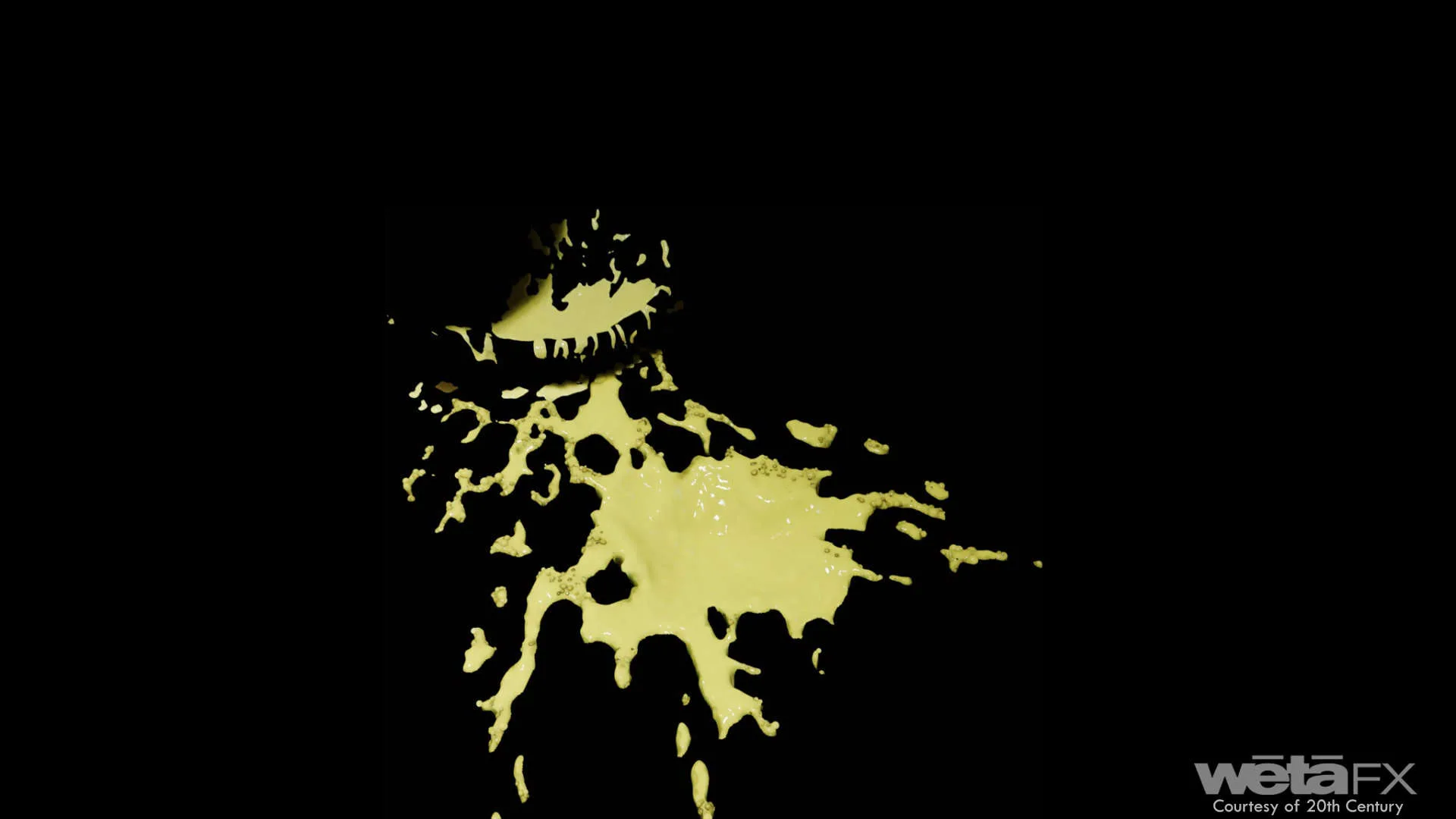
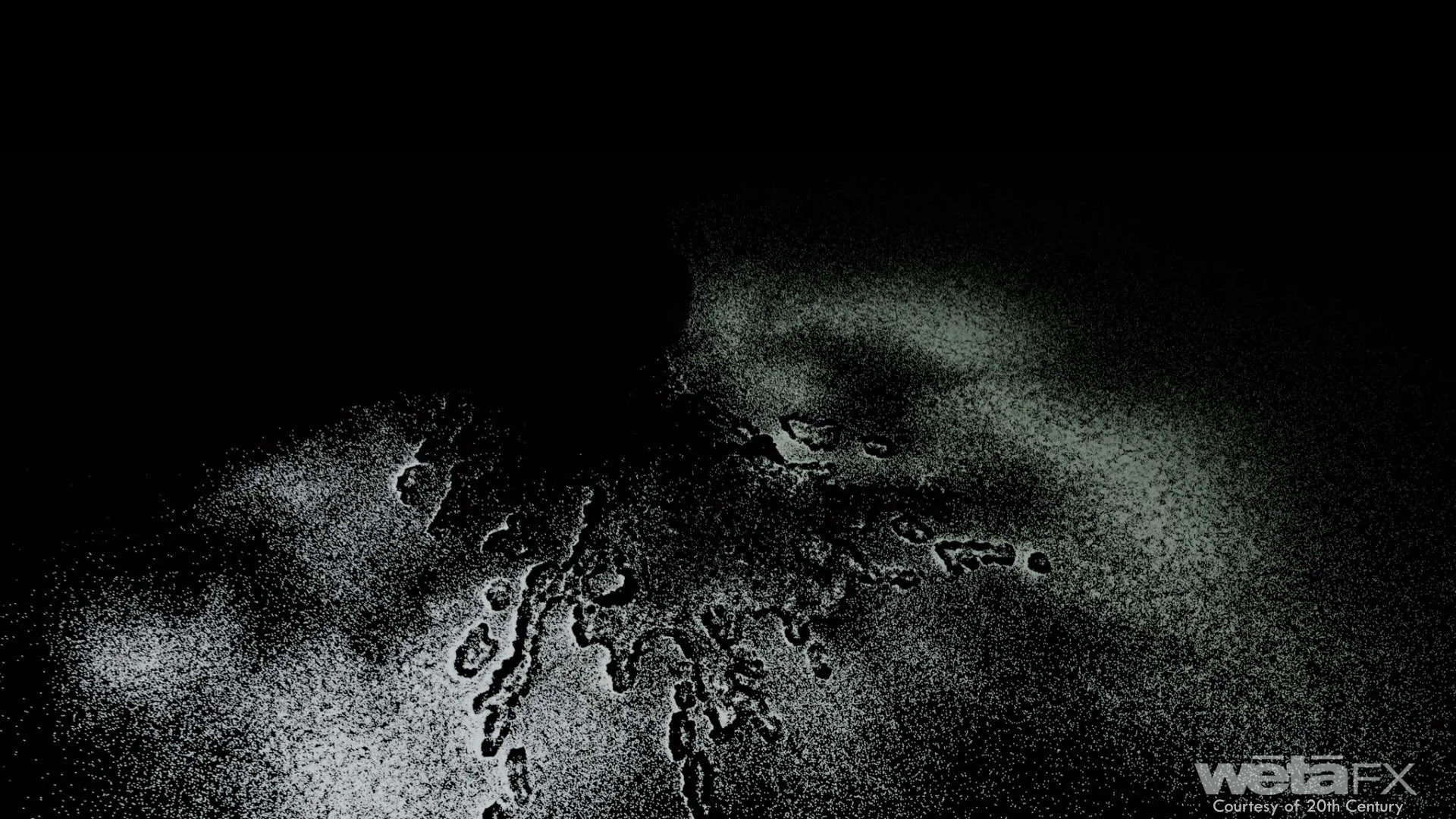
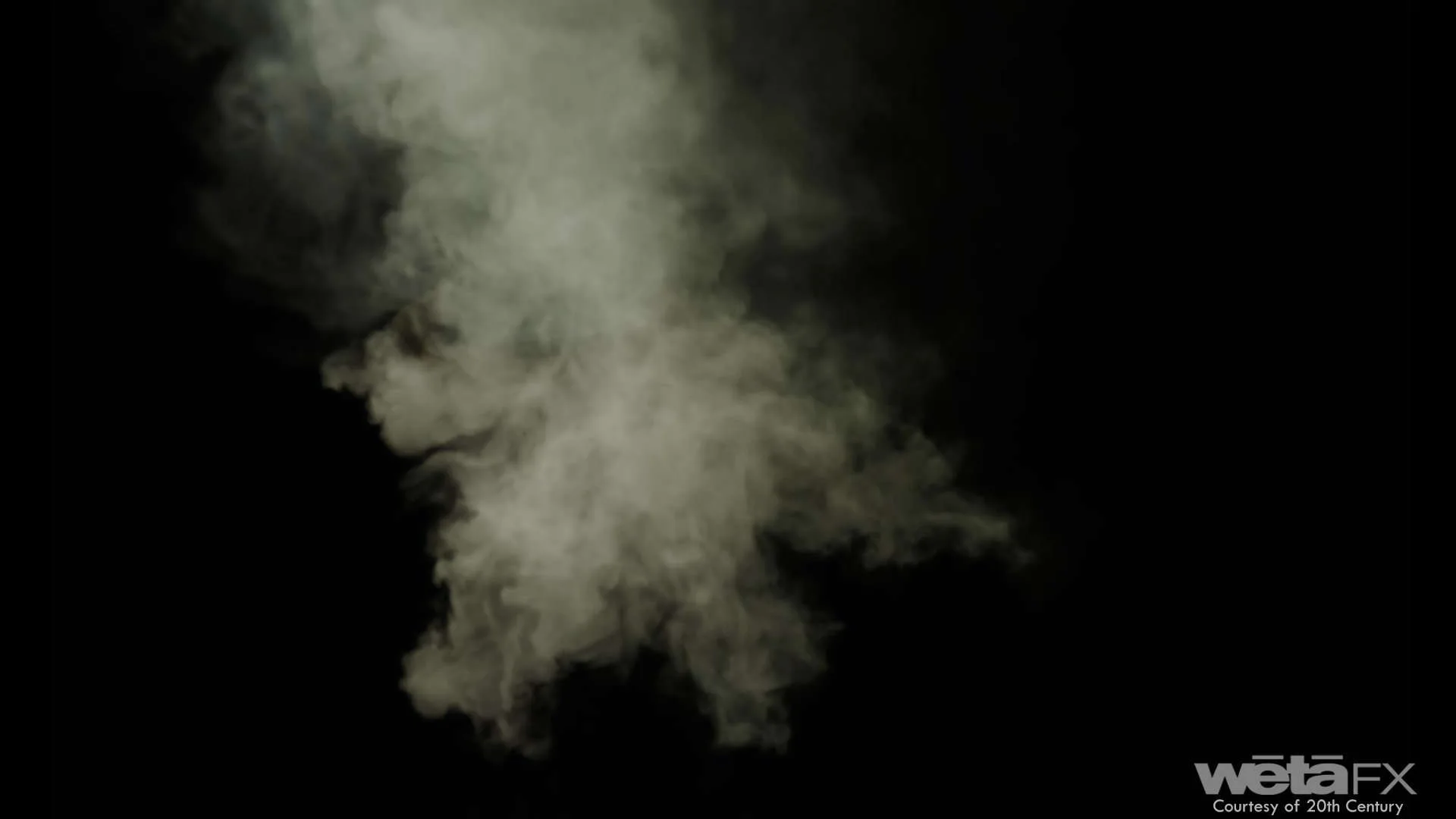
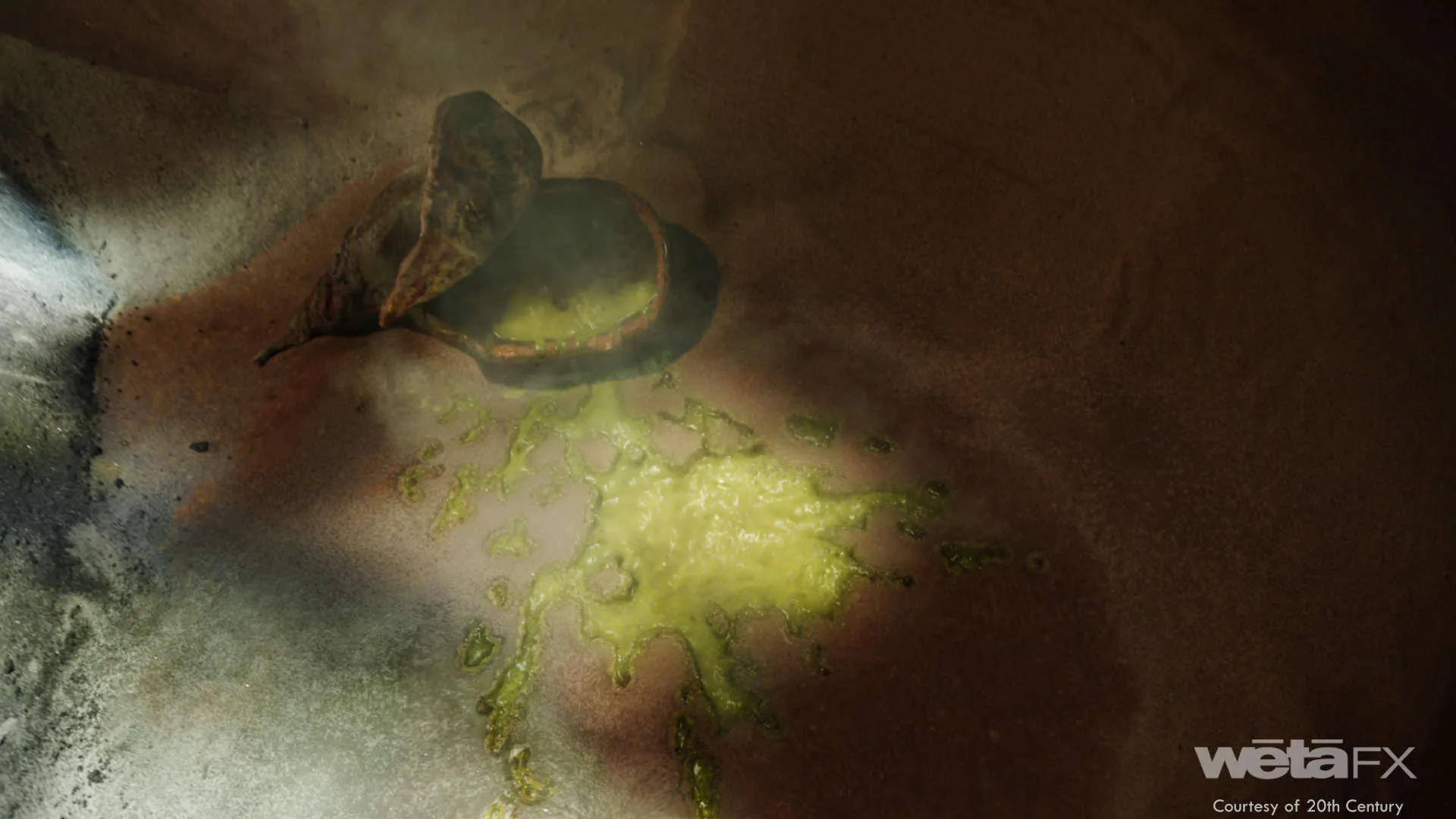
What was the inspiration behind the design of the Offspring, and how did you ensure it stood out as a unique and terrifying creature?
DM: The base design of the Offspring is a 7 ft., 5 in. actor in an amazing prosthetic suit. The performance and the look of the creature are all based off the actor on set. To keep it unique and part of the story, we kept it evolving throughout the sequence. It was always dripping black goo from its back, its tail was growing over time, as well as adjustments to his feet and hands. Its “mini-mouth” was also evolving to grow from a feeding device into more of a weapon. You have characteristics of both the engineers we saw in Prometheus and the Xenomorphs from the original Alien movie. This kept it grounded in something the audience could accept as being part of this universe while still being amazed at how horrific something familiar can be.
How did you approach the animation of the Offspring to convey both its alien nature and its disturbing characteristics?
DM: We focused a lot on the actor’s performance. We needed to make sure when we went digital with the character that it didn’t suddenly move twice as fast as the previous shot with the real actor or move in a way that caused the audience to see the real versus CG performance. It needs to flow as one performance across the sequence. We had a very “less is more” approach to its movement. Having it move too quickly or too erratically was going to turn it into a cartoon character. It has a very similar movement and intent of the Xenomorphs, which is more of a predator hunting its prey. Slowing down the movement made it feel more menacing and frightening, striking only when necessary.
LC: As the Offspring grows up, we slowly discover that it has a tail. This tail is the xenomorph identity so we used it in the way that it would not look like a dog or a scorpion. Instead, an approach we had was to imagine how we would have created this tail motion in the 1980’s. Certainly not by moving the whole body and tail around. One way to ground this giant tail to an actor in a suit would have been to have an “extra” with a stick hidden nearby, moving this heavy tail from its tip. The rest of the tail, attached to the suit, would simply react to it, up to the hips, in a “rack dolly” way. That way, it gives the creature and its appendices an erratic way to move. That’s an example of how we approached details of the Offspring to portray his attitude.
What specific challenges did you face in making the Offspring’s movements feel unnatural yet realistic enough to be terrifying?
LC: We really studied Rob’s performance in order to understand the mechanic of its locomotion. He is a very tall person with a lot of strength. What makes the Offspring terrifying is certainly its slow steering but sturdy moves. There is no waste of energy when it walks, everything moves with momentum. And in term of facial performance, it has a blank look, and never blinks! Even once out in space, when it is in pain with boiling blood, it is still steady, focus on its prey, with a sharp strike. “Less is more” was our best ally.
Can you discuss the collaboration between the design and animation teams in creating the Offspring’s distinct appearance and behaviour?
DM: Giving his movements a sort of psychosexual motion. It’s part of Gieger’s original designs of this world. You understand the movement and the intent without ever needing a character in the scene to spell it out for the audience. It plays on emotions of childhood and maturity that people would never want to be a part of, yet they understand it. It’s the kind of behaviour that is real, but still terrifying to experience. Seeing this creature move in that way is what draws people in, allowing us to set up the finale where all connection to this creature is ripped away.
LC: The moment where the Offspring takes its “mini mouth” out is one of them (sorry if there is another name for it, but that is what all called it!). We specifically worked on both design and animation together to make sure that the story and sub story were hit in those shots. Another one, for instance, was where the tail first grows out after his feed. After talking with Fede to clearly understand his vision, we worked with Models and our Art Department to build a special setup that allowed animation to really drive and stage the tail’s bones pace and timing.
How did you use visual effects to enhance the Offspring’s presence on screen, particularly in terms of texture, lighting, and interaction with its environment?
DM: The Offspring is way too big for the environment it is thrown into. This caused it to be slightly clumsy at times and continually knock items in the room around. Its tail would hit walls, guns, boxes. The Offspring was trying to figure out its place in a world not designed for it. The lighting in the ship moves in ways to enhance the performance. The Offspring would often move slowly, but we took over the set lighting and added fluctuation to the lights, power surges, and flickering. It balanced the movement to hold onto the intensity of the scene. The Offspring’s texture is similar to that of an Engineer from Prometheus, but it was more broken up, fresh out of an egg and growing too quickly. This meant adding more fluid, sand, and slime to the surface of its skin. When the Offspring gets pulled into space, its skin needs to be torn by the flowing sand and atmosphere pouring from the ship, its bleeding, its blood is boiling under the skin.
Were there any memorable moments or scenes from the film that you found particularly rewarding or challenging to work on from a visual effects standpoint?
DM: The space environment took a lot of development and when it came together we all had a moment of both awe and relief. When the first renders of the Offspring started coming out, the team internally would be sort of disgusted by the visual presence of the Offspring, which was definitely memorable. If we were able to gross ourselves out, we were on the right track.
LC: The outer space shots at the end were great to work on. The last shot where Rain escapes, with the Offspring travelling through the container to then finally watch the ship crashing into the ring in the background was definitively challenging and exciting.
Looking back on the project, what aspects of the visual effects are you most proud of?
DM: The worst thing would have been for people to chuckle or snicker when they see the Offspring, so when in the theatre and the audience had such a perfect reaction when they saw it, it was incredibly rewarding. That gasp and almost silent reaction of ‘what am I seeing right now’? Seeing how people didn’t turn away but were engaged and amazed. That is what our team values, knowing the work was successful and got the audience to become a part of that moment.
Which sequence or shot was the most challenging?
DM: The station crashing into the rings. The immense scale and amount of geometry was insane. It needed to be beautiful and destructive at the same time. There were several story points all crossing at the same time. There were easter eggs to add in. It was an immense amount of work with a very satisfying conclusion.
LC: The Offspring jump scare was challenging, when Rain is climbing back up to the container surrounded by all the sand pouring out in space. This took us a lot of iterations before finding the right timing. It was great to see the audience reacting to it, jumping back in their seats!
What is your favourite shot or sequence?
DM: The first shot you see of the Offspring in space. It’s a perfect balance of sound and visual terror.
LC: I really enjoyed the very first shot of the Offspring, on all fours, watching Andy.
A big thanks for your time.
WANT TO KNOW MORE?
Weta FX: Dedicated page about Alien: Romulus on Weta FX website.
Eric Barba: Here’s my interview of Production VFX Supervisor Eric Barba.
© Vincent Frei – The Art of VFX – 2024




